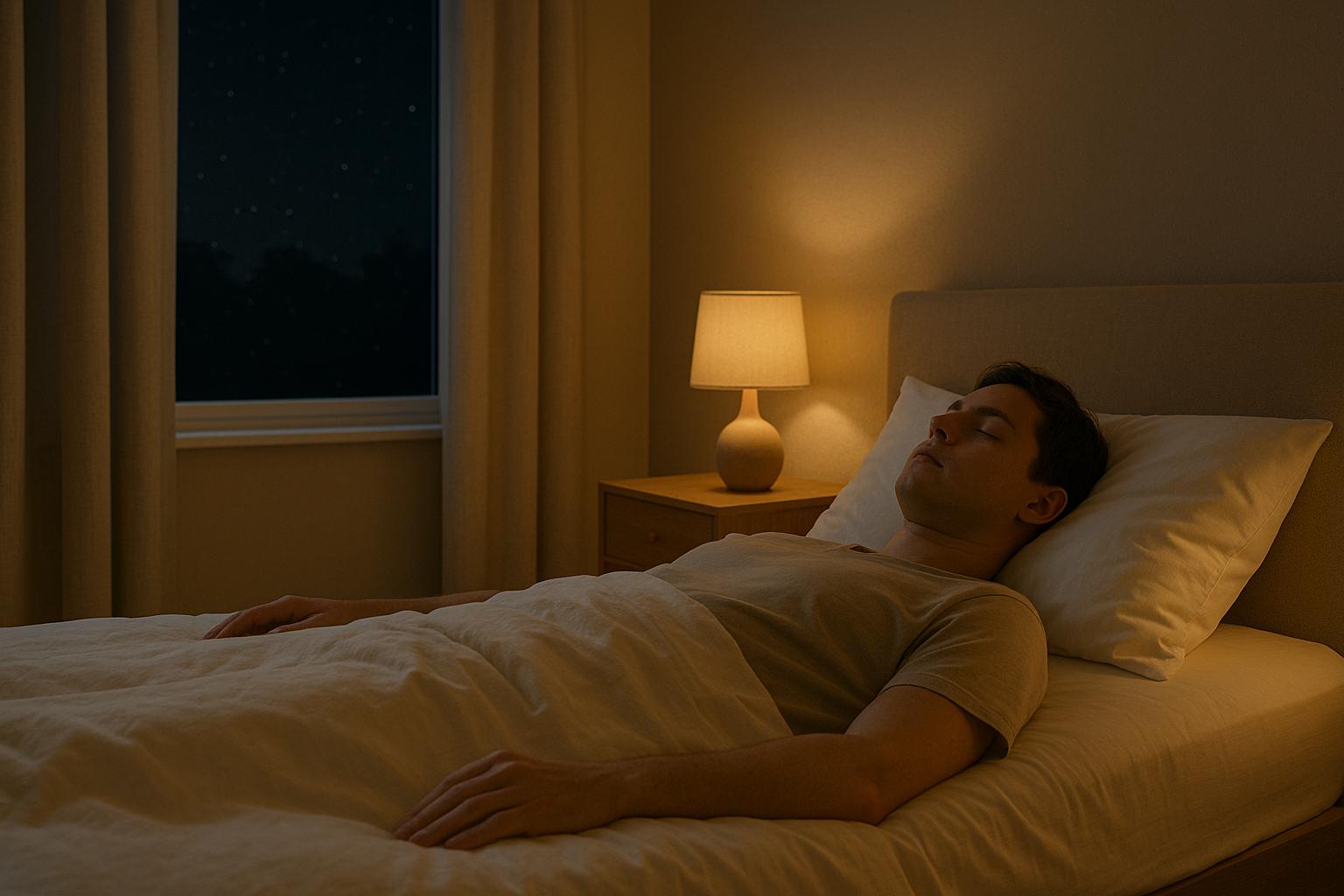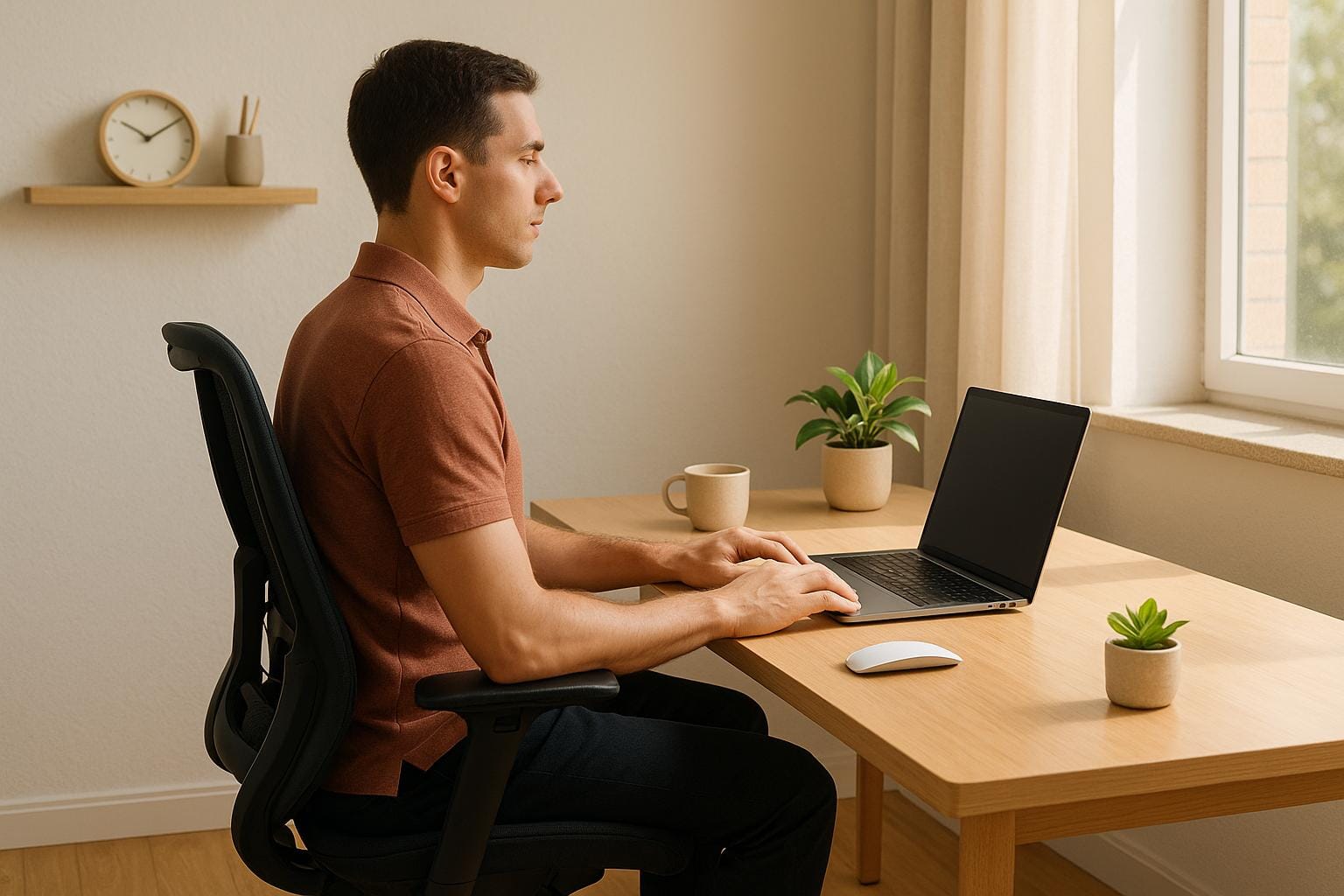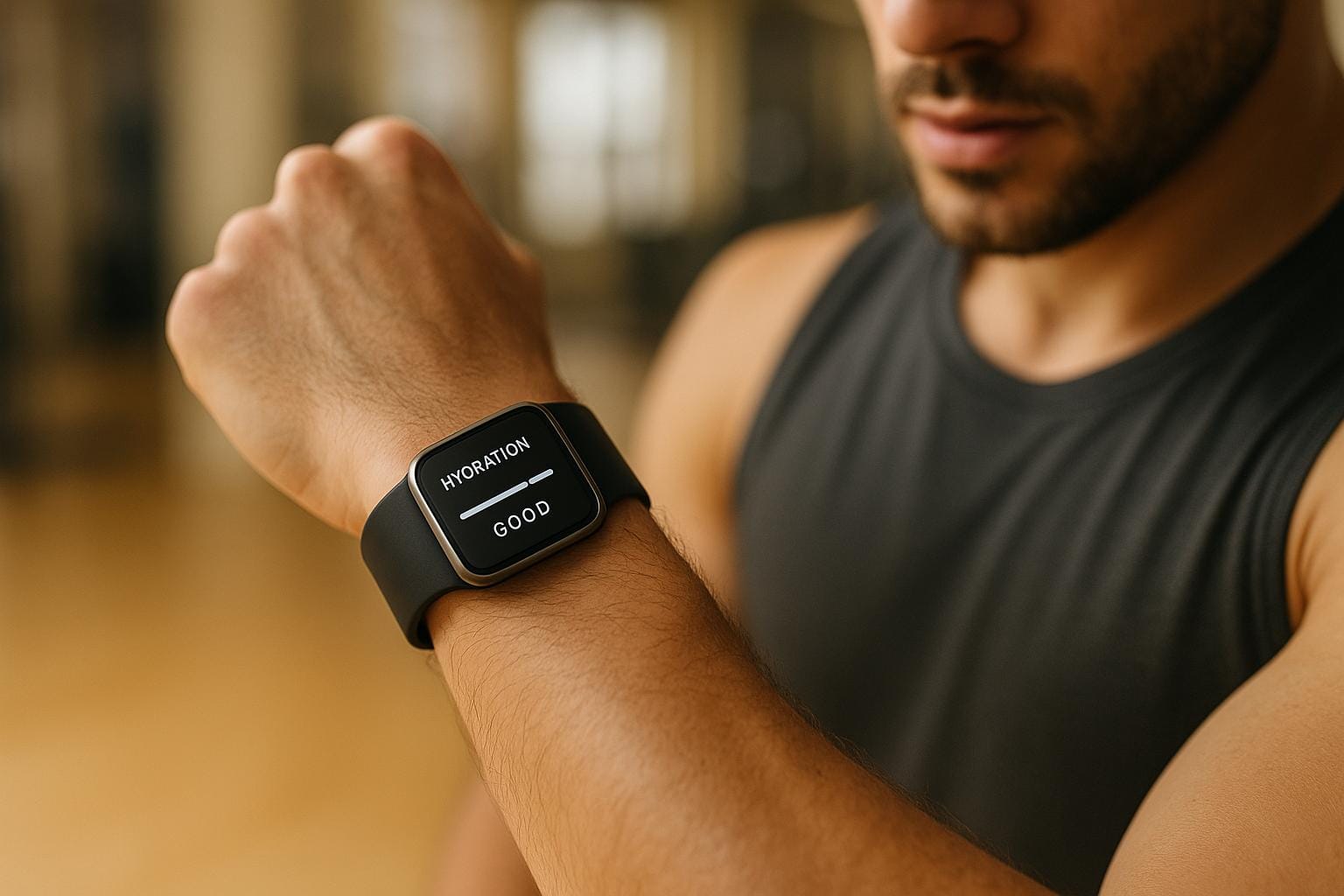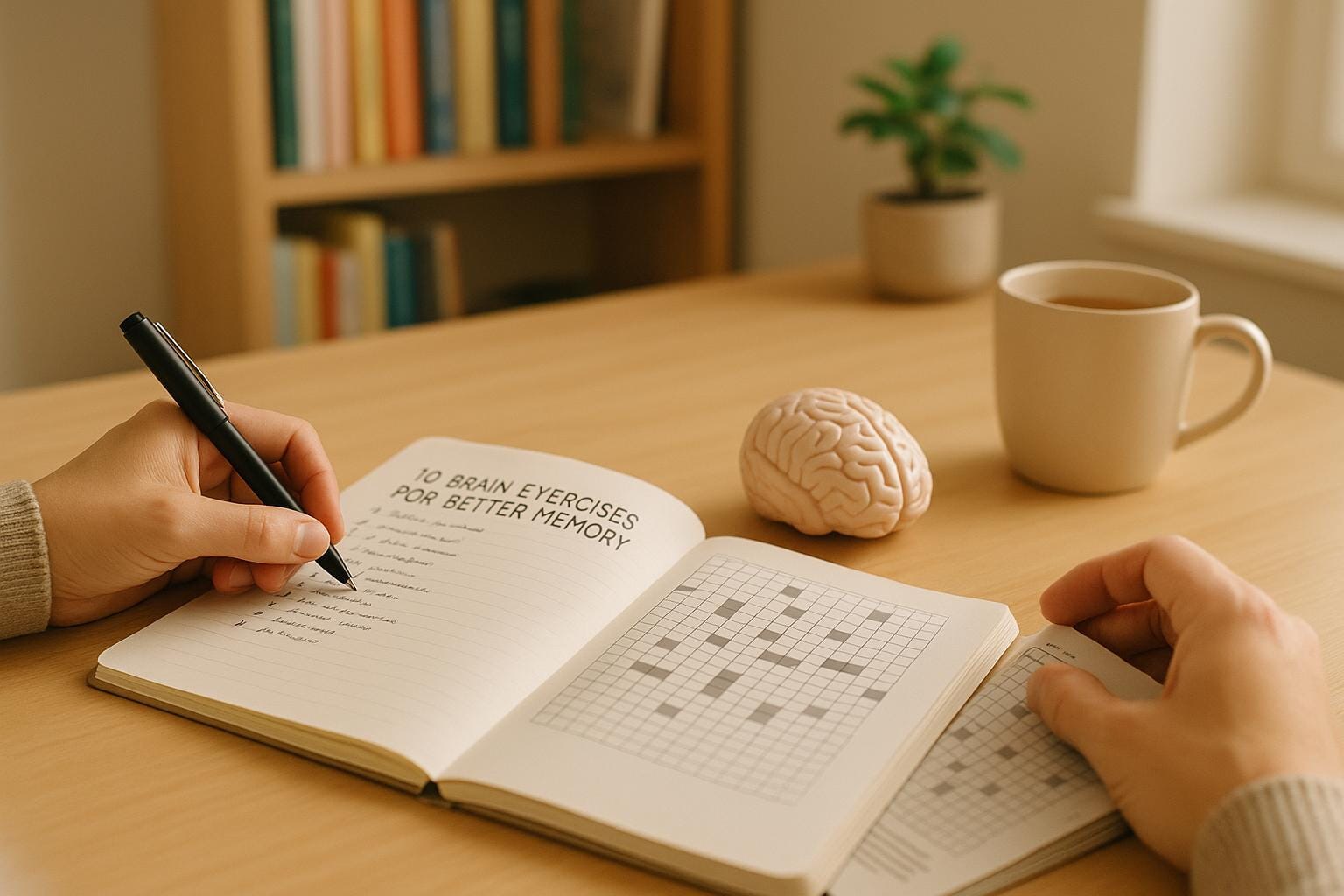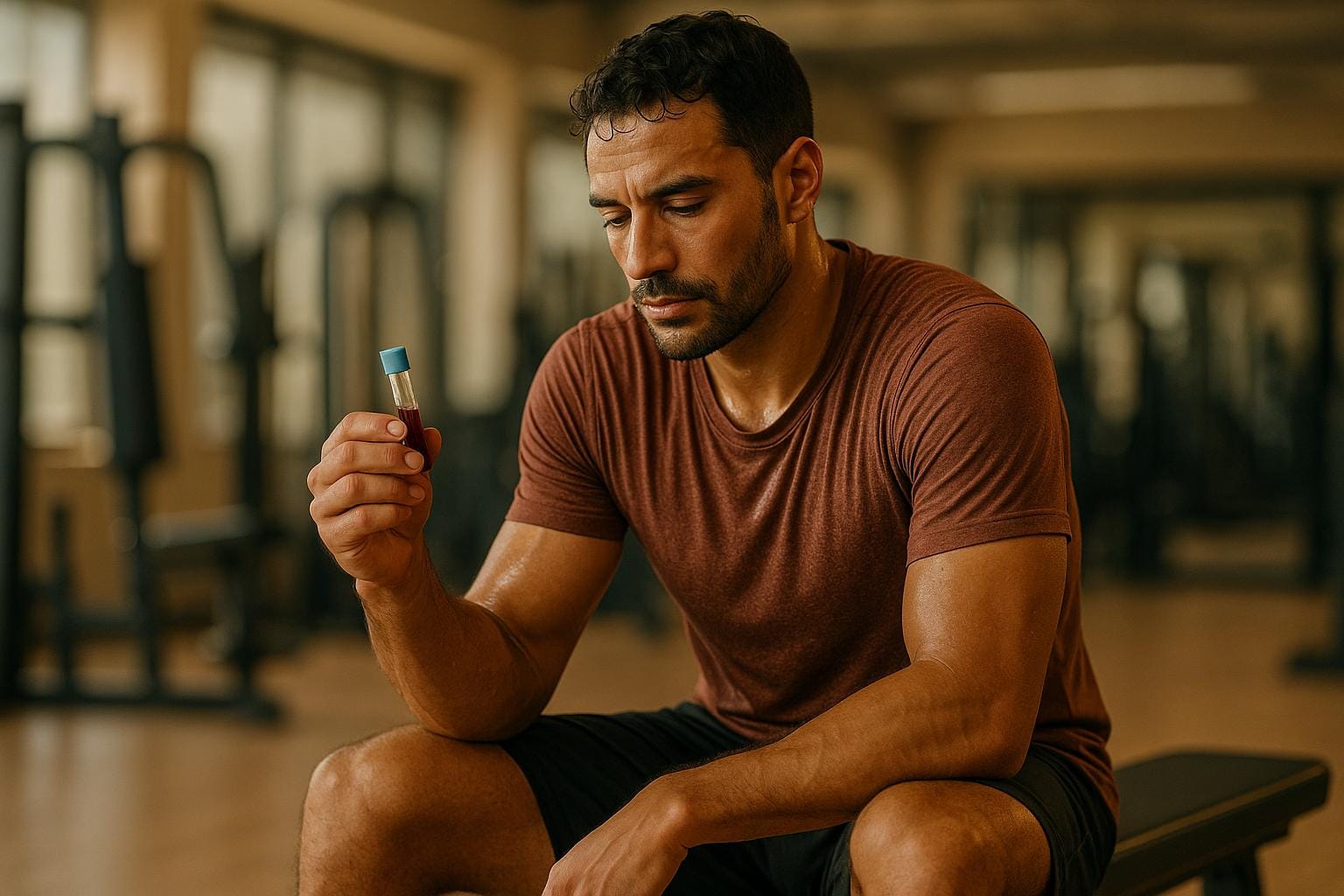Struggling to fall asleep? Body scan meditation can help. It’s a simple relaxation technique where you focus on different parts of your body to release tension and calm your mind. This practice is proven to reduce stress, improve sleep quality, and help you feel more refreshed.
Key Benefits:
- Stress Reduction: Relaxes your body and eases tension.
- Better Sleep: Prepares your mind and body for rest.
- Calmer Mind: Reduces racing thoughts and anxiety.
How to Start:
- Set the Mood: Dim the lights, silence your devices, and find a quiet, comfortable spot.
- Breathe Deeply: Begin with slow, deep breaths to relax.
- Scan Your Body: Focus on each part of your body, from head to toe, releasing tension as you go.
- Stay Consistent: Practice nightly for 5–15 minutes to build a relaxing habit.
This guide walks you through everything you need to know to make body scan meditation part of your nightly routine. Start tonight and enjoy better sleep!
Getting Ready to Practice
Setting Up Your Space
Creating the right environment can make a big difference when practicing body scan meditation before sleep. Here are some tips to prepare your space:
- Temperature: Keep the room at a comfortable level, neither too hot nor too cold.
- Lighting: Use soft, dim lighting to signal that it's time to relax.
- Sound: Reduce noise as much as possible. If silence isn’t an option, try a white noise machine or earplugs.
- Air Quality: Make sure the room is well-ventilated for easy, steady breathing.
Turn off or silence electronic devices (set them to "Do Not Disturb") to avoid interruptions. Once your space is ready, focus on finding a comfortable posture that allows you to fully engage in the meditation.
Timing and Positioning
The best time for body scan meditation is right before bed. Choose a quiet moment when you’re unlikely to be interrupted, helping your mind shift into relaxation mode. Lying on your back with your arms at your sides is a simple and effective position. Use pillows to support your head or knees if needed, and ensure your bedding provides enough support to keep you comfortable without making you too drowsy.
This guide is for informational purposes only and is not a substitute for medical advice. Please consult a healthcare professional before starting any new wellness routine.
Body Scan Meditation: Step-by-Step Instructions
Step 1: Start with Your Breathing
Begin by taking a few deep breaths. Inhale slowly through your nose for a count of four, pause briefly, then exhale through your mouth for a count of six. Repeat this pattern three to four times to establish a calm rhythm. Pay attention to how your belly moves with each breath, allowing your body to relax more deeply with every exhale.
Step 2: Focus on Each Body Part
Work your way through your body, starting at the top and moving downward:
- Head and Face: Notice any tension in your forehead, temples, or jaw. If you sense tightness, consciously let it go.
- Neck and Shoulders: Feel the contact these areas make with the bed. Let your shoulders drop and relax.
- Arms and Hands: Sense the weight of your arms resting against the bed. Observe any feelings in your fingers and palms.
- Chest and Back: Notice your breathing and any pressure points where your back meets the mattress.
- Abdomen: Feel the gentle rise and fall of your belly with each breath.
- Hips and Lower Back: Allow these areas to relax and sink into the bed.
- Legs: Pay attention to sensations in your thighs, knees, and calves.
- Feet: Focus on your ankles, soles, and toes.
Spend about 30 seconds on each area. If you feel tension anywhere, take a deep breath, and imagine releasing that tightness as you exhale.
Step 3: Connect with Your Whole Body
Once you've scanned each part, shift your focus to your entire body. Notice how everything feels connected and supported by the bed beneath you. Let yourself sink even further into relaxation with each breath.
If your mind starts to wander, don’t worry - this is completely normal. Gently guide your attention back to the specific body part you were focusing on without judgment. Over time, it will become easier to maintain focus.
Keep your breathing slow and steady throughout the meditation. The full body scan typically takes 10–15 minutes, but you can adjust the timing to suit your needs.
This guide is for informational purposes only and should not replace medical advice. Always consult a healthcare professional before beginning any new wellness or fitness routine.
Making Your Practice More Effective
Addressing Common Challenges
Here’s how to tackle some typical hurdles:
Mind Wandering
When your thoughts drift, bring your attention back to physical sensations. A helpful method is counting your breaths: inhale for 4 counts, hold for 2 seconds, and exhale for 6 counts.
Physical Discomfort
If you feel uncomfortable, adjust your position. For example, place a pillow under your knees or use a folded blanket to support your neck. Aim to stay comfortable for 10–15 minutes.
Falling Asleep Too Quickly
If you find yourself dozing off too soon, consider practicing earlier in the evening or sitting upright against your headboard to complete the session.
Complementary Relaxation Techniques
To deepen your practice, try combining it with these relaxation methods:
Gentle Pre-Bedtime Yoga
Incorporate simple stretches before beginning your body scan to ease tension. Focus on poses like:
- Child's pose to relax your spine
- Forward folds to calm your nervous system
- Legs up the wall to promote better circulation
Progressive Muscle Relaxation
Between sections of your body scan, tense each muscle group for 5 seconds, then release for 10 seconds. This helps you notice and release hidden tension.
Mindful Breathing Techniques
Experiment with different breathing patterns to support relaxation:
- Box breathing: Inhale, hold, exhale, and pause for 4 counts each
- Ocean breath (ujjayi pranayama): A slow, controlled breath with a slight throat constriction
- Extended exhale: Inhale for 4 counts, exhale for 6
Stick to one or two of these techniques consistently to see which works best for your routine. They can make your transition into sleep even smoother.
This article is for informational purposes only and is not intended as medical advice. Always consult a healthcare professional before starting a new wellness or fitness routine.
Making Body Scanning a Nightly Habit
Starting a Regular Practice
To establish a nightly body scanning routine, follow this four-week plan:
Week 1: Foundation
Dedicate 5 minutes each night to body scanning, about 30–45 minutes before bedtime. Set a phone reminder and turn on "Do Not Disturb" to avoid distractions.
Week 2: Building Consistency
Increase your practice to 10 minutes. Create a meditation-friendly space in your bedroom by:
- Choosing a specific spot on your bed or floor
- Keeping a comfortable cushion or pillow nearby
- Maintaining a peaceful atmosphere
Week 3: Deepening the Practice
Extend your sessions to 15 minutes. Use a sleep journal to track:
- How long you meditate
- The quality of your sleep
- How refreshed you feel in the morning
- Any challenges or observations
Week 4: Full Integration
Aim for a steady 15–20 minute practice each night. Notice how your sleep and relaxation improve as this routine becomes second nature.
Supporting Sleep Habits
Boost the effects of your body scan meditation by incorporating these habits:
Optimizing Your Environment
Turn your bedroom into a sleep-friendly space by:
- Using blackout curtains or an eye mask
- Adding a white noise machine or fan
- Removing electronics or setting them to night mode
- Keeping the room cool and ventilated
Pre-Meditation Routine
Create a calming pre-sleep ritual:
| Time Before Bed | Activity | Purpose |
|---|---|---|
| 2 hours | Stop consuming caffeine | Reduce stimulation |
| 1 hour | Take a warm bath or shower | Encourage relaxation |
| 30 minutes | Dim the lights | Prepare for sleep |
| 15 minutes | Gentle stretching or movement | Relieve physical tension |
Sticking to a Schedule
Keep consistent sleep and wake times, even on weekends. For instance, if bedtime is 10:30 PM:
- Start winding down at 9:45 PM
- Begin your body scan at 10:00 PM
- Finish by 10:20 PM
- Lights out at 10:30 PM
Remember, consistency matters more than duration. A 5-minute nightly practice is more effective than 20 minutes done sporadically. Keep your setup simple and ready to go to make sticking to the habit easier.
This article is for informational purposes only and does not replace medical advice. Consult a healthcare professional before starting any new wellness routine.
Guided Body Scan Meditation for Sleep
Conclusion: Your Path to Better Sleep
This guide has shown how body scan meditation can help improve sleep. Adding it to your nightly routine can lead to falling asleep faster and enjoying more restful sleep.
Consistency Matters
Studies highlight that practicing body scan meditation regularly helps reduce stress and improves how quickly you fall asleep. Over time, your body learns to relax more easily.
What You Gain
Regular practice not only shortens the time it takes to fall asleep but also improves the quality of your rest and increases awareness of your body.
Getting Started
Try a 5-minute session tonight. Pay attention to each sensation in your body without judgment. As you stick with it, gradually extend the time. Pairing this practice with a calming environment can lead to better sleep over time.
Setting Yourself Up for Success
Create the right atmosphere for meditation: a quiet, cool bedroom, a consistent sleep schedule, and a relaxing pre-bed routine. By making body scan meditation part of your evening habits, you're equipping yourself with a tool to ease stress and improve your sleep.
This article is for informational purposes only and does not replace medical advice. Always consult a healthcare professional before starting new fitness or wellness practices.
FAQs
How can body scan meditation help improve your sleep?
Body scan meditation helps improve sleep by encouraging deep relaxation and reducing stress. By focusing your attention on different parts of the body, this practice eases tension and quiets the mind, making it easier to fall asleep and stay asleep.
It also promotes mindfulness, which can break the cycle of overthinking or worrying at bedtime. This calming effect prepares your body and mind for restful, restorative sleep.
Can I combine body scan meditation with other relaxation techniques to improve sleep?
Yes, body scan meditation can be combined with other relaxation techniques to enhance its effectiveness for better sleep. For example, you can pair it with deep breathing exercises, progressive muscle relaxation, or aromatherapy to create a more calming bedtime routine.
Experiment with different combinations to find what works best for you. Just remember to keep the environment quiet and comfortable, and focus on activities that help you unwind both physically and mentally.
What can I do if I struggle to stay focused during body scan meditation?
It's normal to have trouble focusing during body scan meditation, especially if you're new to the practice. If your mind starts to wander, gently bring your attention back to the part of the body you're focusing on. Avoid judging yourself - this is part of the process.
You can also try meditating in a quiet, comfortable space with minimal distractions. Practicing regularly, even for just a few minutes a day, can help improve your focus over time. Remember, the goal isn’t perfection but cultivating awareness and relaxation.


